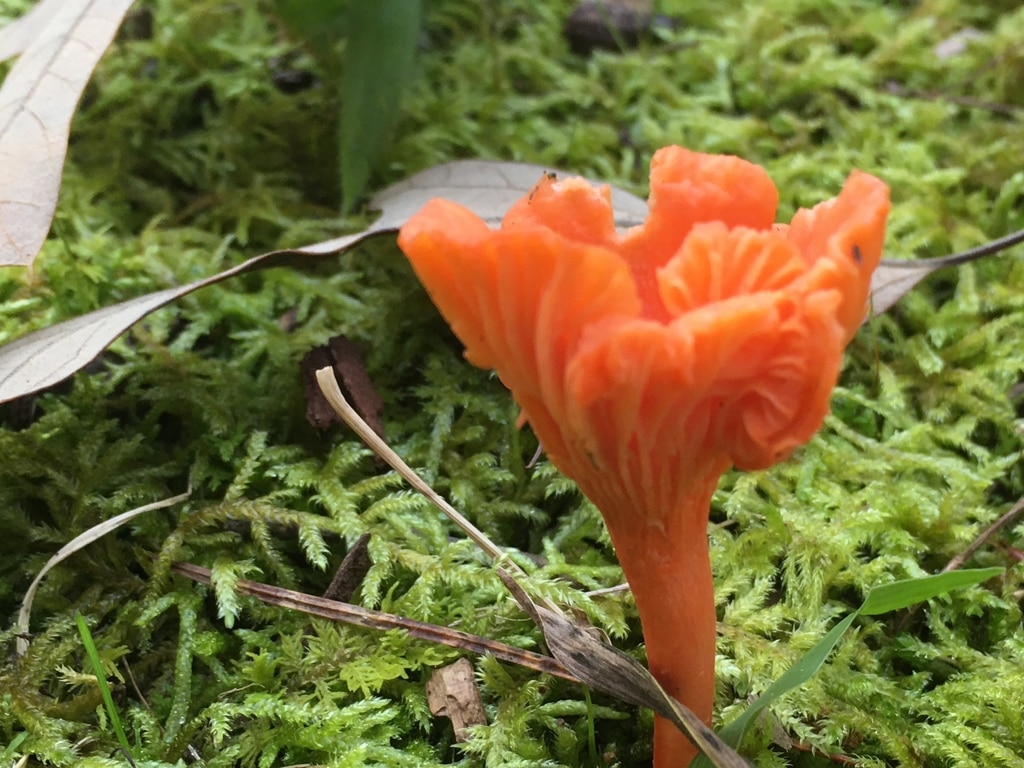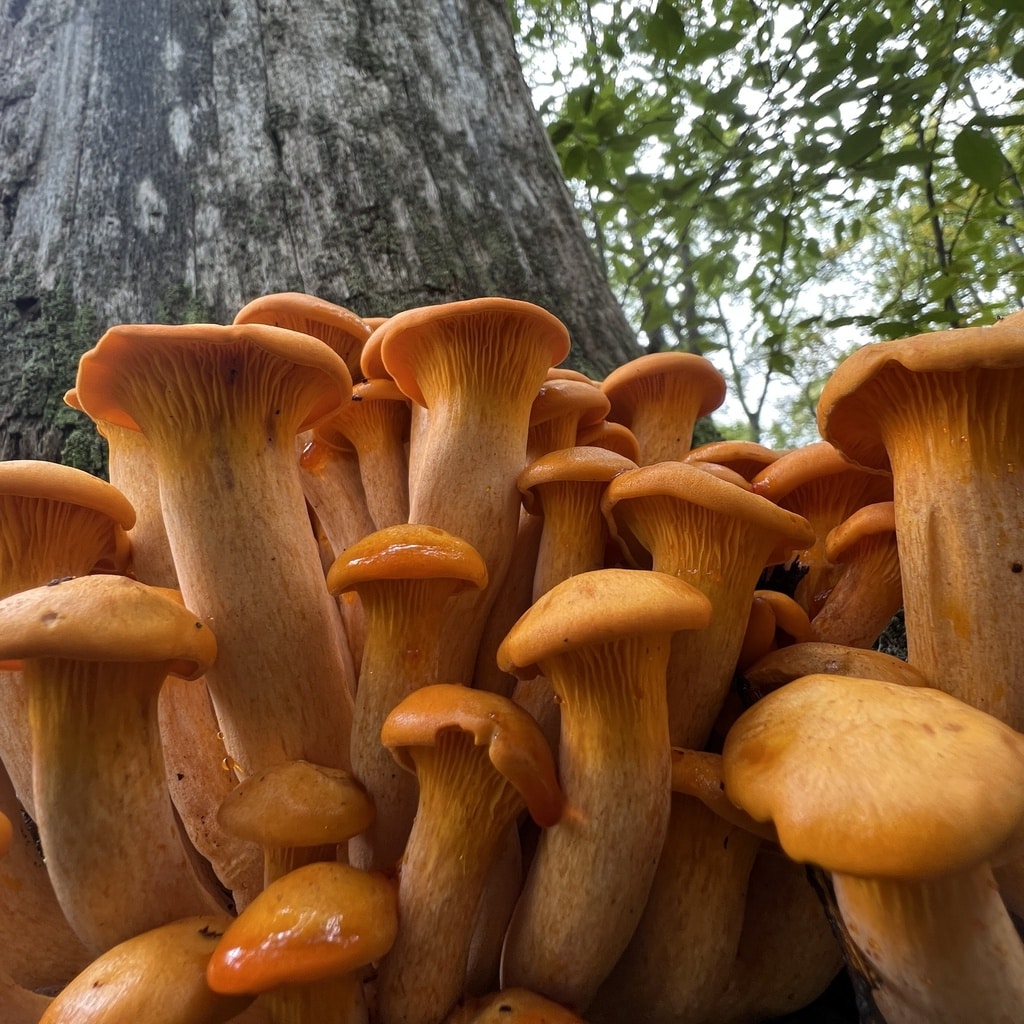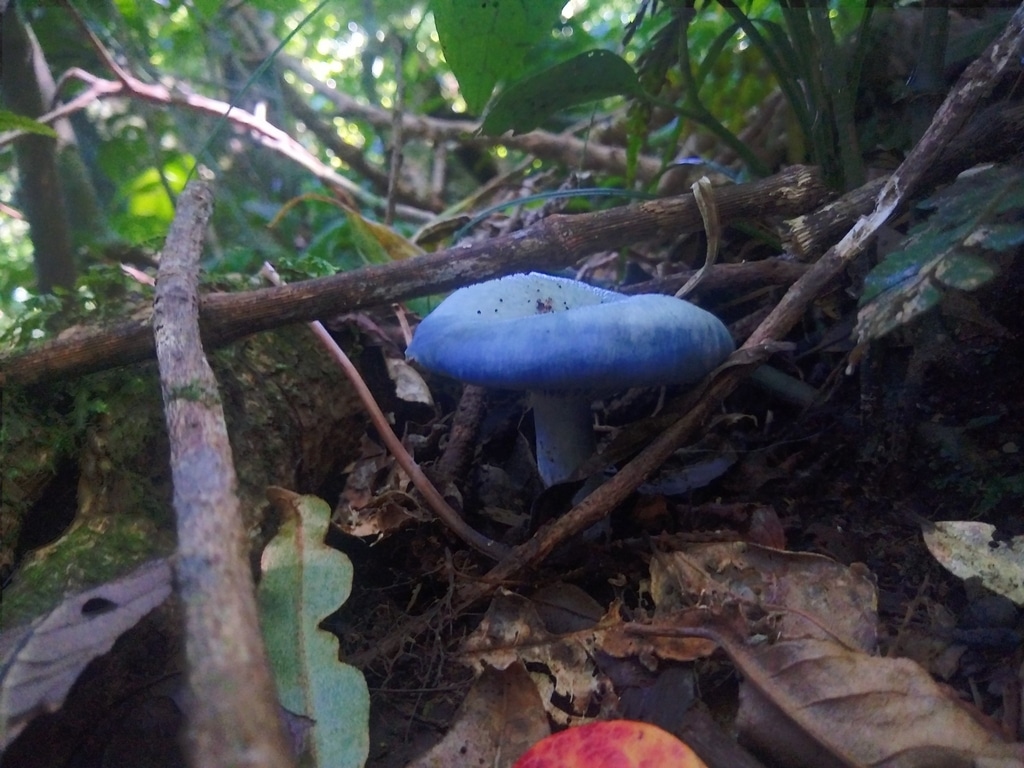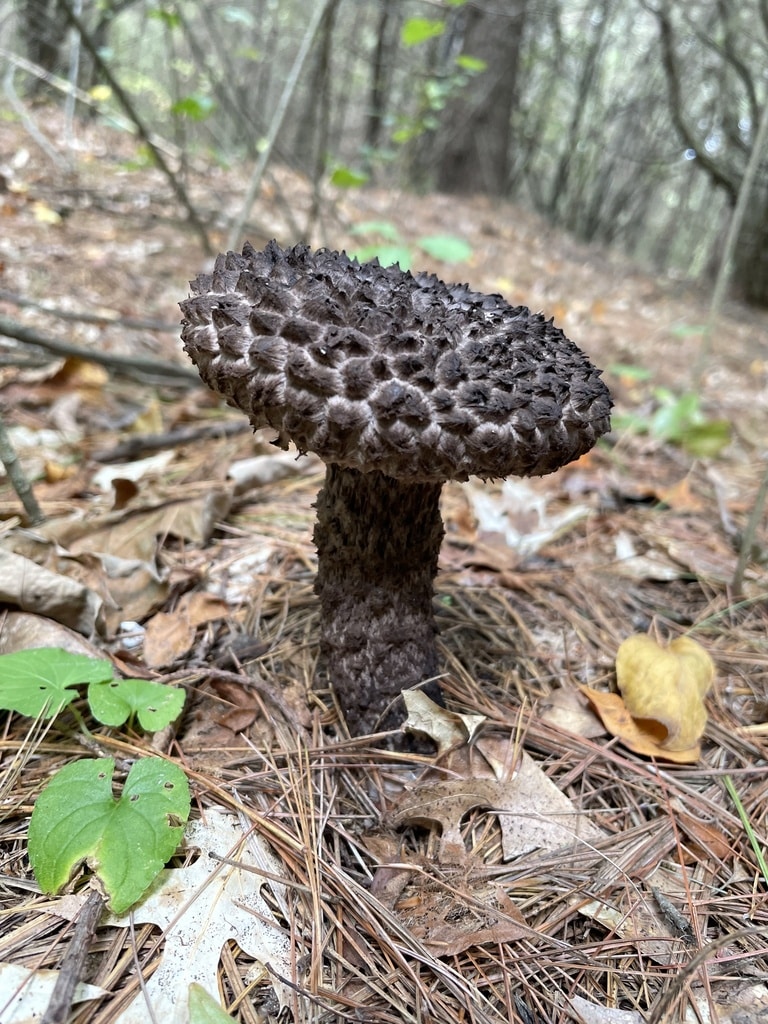By Katie Harris
Zombie fingers reach up through the soil. Red velvet boots push away bark on a stump. Crystal jelly glows. An alien kingdom thrives in Dupont State Forest—the Kingdom of Fungi. Or perhaps not so alien, as humans share more genetic commonalities with fungus than with plants. Holding together the forest fabric, underground mycelium form close relationships (mycorrhizae) with the roots of plants and trees, transporting nutrients and even messages through a language of chemical signals. The mushrooms are the fruit of this underground network, flushing when conditions are right. And for the mushroom hunter, Dupont State Forest is a treasure trove of these fruits.
While there are mushrooms to be found year-round in the Forest, the current summer season leading into autumn is an excellent time to go on a mushroom hike, especially for people new to the search. Beginners often start with the chanterelle family. Jovial, diverse, and brightly colored in a range of vibrant to pale oranges, the many species of chanterelle found in Dupont cluster beside trails… sometimes right in the middle of the trail itself.

Red Chanterelle (Cantharellus cinnabarinus)
Of course, the orange but more luminous Jack-O’-Lantern (Omphalotus olearius) can also be found in Dupont, and this type of mushroom, toxic for human consumption, is sometimes mistaken for the culinary chanterelle by newbies, who may later find themselves praying to the porcelain god. By day, a Jack’s presence makes you feel you are trespassing in a gnome’s yard. At night, this mushroom emits a blue-green glow due to its bioluminescence. Be warned and learn the difference between a chanterelle and a Jack-O’-Lantern.

Eastern American Jack-O’-Lantern (Omphalotus olearius)
Stunning and more elusive than children at chore time, the Indigo Milk Cap (Lactarius indigo) loves to grow in mature hardwood or mixed forests. It literally “bleeds blue,” and its gilled underside is even more exquisite than the cap.

Indigo Milk Cap (Lactarius indigo)
And if these mushrooms haven’t piqued your interest, perhaps the Old Man-of-the-Woods is more your style. How did this mushroom earn such a unique name? I believe the distinct smell. Others claim its unkempt hair style. Or maybe the way it brings a smile/grimace to one’s face, like a dad joke.

Old Man of the Woods (Strobilomyces strobilaceus)
A few tips for those new to the delights of mushroom hunting—Precipitation is cause for celebration because one of the best times to search for mushrooms is right after a big rain.
Note the types of trees on your hunt; some mushrooms tend to grow on or near red oaks, while others prefer hemlock, etc. Don’t be afraid to get down on the ground, either. The Black Trumpet (Craterellus cornucopioides), for example, is camouflaged and sneaky. But I find that once I successfully identify a certain type in the woods, I begin to see that mushroom everywhere.
This is only skimming the surface, of course. Connect with local experts (keep an eye out for organized mushroom hikes hosted by Friends of Dupont Forest), dive into the guidebooks, and spend hours in the forest; this will set you on the path of the amateur mycologist. Few turn back.
One quick note before you go—you cannot remove anything from the Forest, so please take only pictures. Happy hunting!